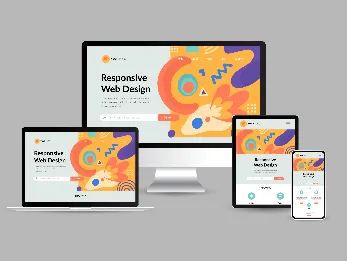These 7 tips will surely improve the CTR on your website
6 mins | 21 Mar 2023

Introduction
In digital marketing, click-through rate (CTR) is a crucial metric that measures the effectiveness of your marketing campaigns. CTR refers to the percentage of users who click on a specific link or ad compared to the number of total impressions or views. The higher your CTR, the more successful your marketing campaign will likely be in achieving its goals, such as driving traffic, generating leads, or boosting sales. Understanding and improving your website's CTR is essential for maximizing your marketing ROI and achieving your business objectives.
In this article, we will explore the importance of CTR in digital marketing and provide tips on improving your website's CTR.
Click-through rate (CTR) is a critical metric in digital marketing, as it indicates the number of clicks your website or web page receives per impression. A high CTR is essential for achieving your website's marketing goals, such as lead generation, sales, or brand awareness. But a good CTR average is even more vital.
What is a good CTR?
A good click-through rate (CTR) varies depending on several factors, such as the industry, the type of ad or content, the audience, and the campaign's goals. A high CTR indicates a successful campaign, implying that your content or ads resonate with your target audience and drive engagement.
However, a good CTR can vary depending on your advertising platform or channel. For example, Google Ads average CTRs vary by industry, but generally, a CTR above 2% is considered good, while a CTR above 5% is excellent. Similarly, a good Facebook ad CTR can range from 0.9% to 3%, depending on the ad type and the audience.
How to calculate CTR?
To calculate the click-through rate (CTR) of your website or ad campaign, use the following formula:
CTR = (Number of Clicks / Number of Impressions) x 100
Here's an example: If your ad was shown 1,000 times and it received 20 clicks, the CTR would be:
CTR = (20 clicks / 1,000 impressions) x 100 = 2%
This means that 2% of people who saw your ad clicked.
In the case of a website, if a particular page on your site had 500 visitors and received 25 clicks on a link or button, the CTR for that page would be:
CTR = (25 clicks / 500 visitors) x 100 = 5%
This means that 5% of people who visited that page clicked on the link or button.
Remember that CTR is just one metric to measure the success of your website or ad campaign, and it should be analyzed in conjunction with other metrics, such as conversion rate, bounce rate, and time on site, among others, to provide a more comprehensive view of your marketing performance.
Why does Organic CTR matter?
Organic click-through rate (CTR) is an essential metric for measuring the performance of your organic search engine optimization (SEO) efforts. Organic CTR refers to the percentage of clicks your website receives compared to the number of times it appears in search engine results pages (SERPs) for a particular query.
There are several reasons why organic CTR matters:
Traffic:
A high organic CTR indicates that your website attracts more traffic from search engines. This traffic can lead to increased engagement, conversions, and revenue.
Visibility:
A higher organic CTR means your website ranks higher in search engine results pages, making it more visible to potential customers. This increased visibility can help improve brand awareness and increase the likelihood of users clicking on your website.
Competition:
Organic CTR indicates how well your website competes against other websites in your niche. If your website has a higher CTR than your competitors, it can help you gain a competitive advantage and attract more traffic and customers.
Relevance:
A high organic CTR also indicates that your website's content is relevant and useful to users, improving user experience and increasing the likelihood of users returning.
Therefore, tracking and improving your website's organic CTR is essential for optimizing your SEO efforts, increasing website traffic, improving visibility, and attracting more potential customers.
What are the best ways to improve the CTR of a website?
Improving a website's Click-Through Rate (CTR) is critical to increasing traffic and achieving marketing goals. Here are the top 7 ways to improve your website's CTR:
Optimize Your Meta Tags:
Your website's meta tags, such as the page title and meta description, are the first thing users see when they come across your site in search engine results pages (SERPs). Optimize them to include relevant keywords and a compelling call-to-action (CTA) to entice users to click on your website.
Improve Your Site Speed:
Slow website speed can lead to a high bounce rate and fewer clicks. Optimize your website's loading time by compressing images, reducing server response time, and enabling browser caching to provide a better user experience.
Use Attention-Grabbing Headlines:
Your website's headline should be short, attention-grabbing, and clearly state the page's purpose. Use power words, action verbs, and numbers to make your headlines more compelling and increase click-through rates.
Include Compelling CTAs:
A strong call to action can persuade users to take action and click on your website. Use actionable language and create a sense of urgency to entice users to click on your CTA.
Optimize for Mobile Devices:
Mobile users account for a significant portion of website traffic, so optimizing your website for mobile devices is crucial. Ensure your website is mobile-friendly, with a responsive design, fast loading times, and easy-to-use navigation.
Use Rich Snippets:
Rich snippets provide additional information about your website in search engine results, such as reviews, ratings, and prices. Using them can increase your website's visibility, improve its click-through rate, and attract more qualified traffic.
Experiment with A/B Testing:
A/B testing involves creating and testing two web page versions to see which performs better. By experimenting with different headlines, CTAs, layouts, and other website elements, you can identify the most effective strategies for increasing your website's CTR.
Final Thoughts
In conclusion, Click-Through Rates (CTR) is an essential metric for measuring the success of digital marketing campaigns. A high CTR indicates that the ad or link is relevant and engaging to the audience, while a low CTR may not necessarily mean failure. To improve CTR, marketers can focus on optimizing their ad copy, using strong calls to action, and targeting the right audience. Tracking and analyzing CTR regularly is also important to make data-driven decisions and optimize marketing strategies for better results. By understanding and leveraging the power of CTR, marketers can effectively drive traffic, generate leads, and achieve their marketing goals.
Do you want to improve the CTR on your website? Well, you may need an expert’s assistance. Get in touch with the 12Grids team.
Author

Share
Share
Related

Polymers, Innovation, And A Modern Website: The Goldstab Organics Journey
5 mins : 10 Nov 2025

From Friction to Finish Line: The God of Sports Digital Transformation
6 mins : 17 Sept 2025

The Future Of Responsive Web Design: Emerging Trends, Innovations And Predictions In 2024
7 mins : 26 Apr 2024
Other Articles

Responsive Web Design: Understanding The Basics For Seamless User Experiences
7 mins : 29 Apr 2024

Everything You Should Know About The Ideal Screen Size For Responsive Design
6 mins : 26 Apr 2024

Enhance Your Web Design Creativity with Google Web Designer
4 mins : 17 Nov 2023
